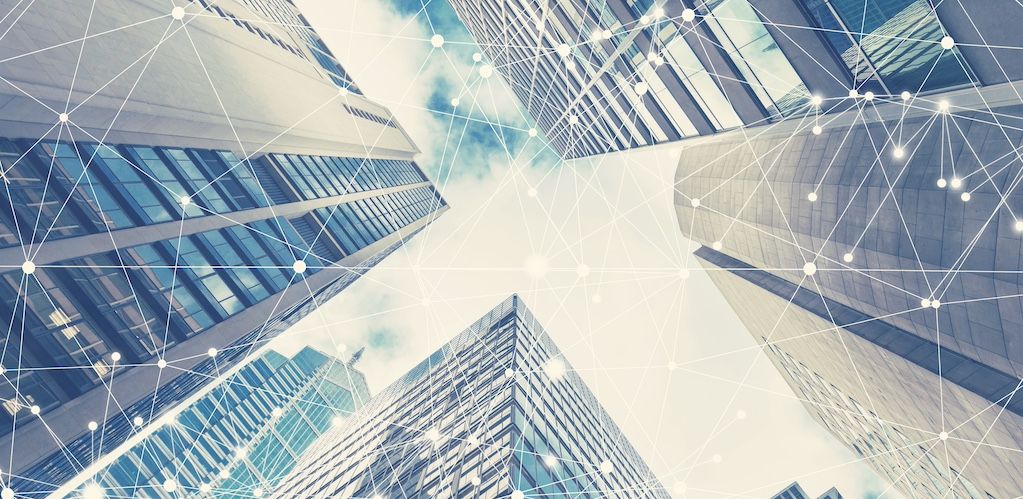THE INTERSECTION OF SUSTAINABILITY AND DIGITAL INNOVATION IN COMMERCIAL REAL ESTATE

It’s common knowledge that conventional buildings encounter challenges related to inefficiency and excessive spending when managing internal systems and building operations. Energy use alone is the single largest operating expense within commercial office buildings. To counter these issues, the concept of smart buildings has grown as a transformative force, redefining the way building owners and managers think about sustainable and efficient commercial real estate.
The term smart building refers to a structure incorporating intelligent processes to automate and regulate building systems, including heating, lighting, ventilation, and air conditioning. Through these smart processes, businesses and organizations gain the ability to make informed decisions and take actions based on internal operations, enhancing the overall efficiency and performance of the building.
With the integration of Artificial Intelligence (AI) technology and the Internet of Things (IoT) into the key internal operations of a building, various components such as central heating and lighting are interconnected, communicating, and collaborating seamlessly. Leveraging AI technology enables the collection and management of data related to the built environment, improving the performance of the existing building management system (BMS) as a result.
This allows the building to minimize waste, establishing a space that is not only more efficient and sustainable by 30-50%, but also supports the well-being of occupants. Let’s dive a little bit more into how it achieves this.
THE DIFFERENCE WITH SMART BUILDINGS
One of the most significant advantages of smart buildings is decreased energy consumption, which contributes to increased cost savings and a smaller carbon footprint for businesses. In a smart building, energy consumption can be accurately managed and automated for each area, ensuring that no section of the building is heated, cooled, or illuminated unnecessarily. This approach addresses the problem of inefficient energy use and promotes sustainable practices, setting it apart from standard buildings.
Digital innovation in smart buildings extends beyond energy management to include predictive maintenance and resource optimization. Sensors embedded in critical building components, such as elevators, HVAC systems, and security systems, collect data on performance and potential issues. This data is then analyzed using AI algorithms to predict maintenance needs, preventing costly breakdowns, and prolonging the lifespan of equipment.
While the building’s internal systems are a priority, so are its inhabitants. With 80-90% of time spent indoors, it is crucial to ensure that the indoor environments are optimized for energy efficiency and indoor air quality. Smart buildings prioritize occupant well-being through features like air quality monitoring and personalized climate control. Real-time data on air quality allows building management systems to adjust ventilation and filtration systems, ensuring a healthy indoor environment.
From a broader perspective, the data generated by smart buildings also provides valuable insights for urban planning and development. City planners can leverage this information to design more sustainable and resilient urban environments, considering factors such as traffic patterns, energy consumption, and air quality.
HOW ARE THEY MADE?
The good news is any building can be smart. There are two approaches to having a smart building: from the development stages, or by retrofitting. Retrofitting is the process of renovating, refurbishing, or adapting existing buildings to meet contemporary building standards.
This typically includes adaptations aimed at enhancing a building’s sustainability or promoting the well-being of its occupants, such as upgrading HVAC systems, modernizing lighting systems, and incorporating AI technology with an IoT network. The essential elements for establishing a successful smart building involves identifying priorities and having access to precise data. With this information, property managers and owners can take the next step to create an environment that drives tangible results.
A SMARTER COMMERCIAL REAL ESTATE INDUSTRY
The transition from conventional buildings to smart buildings represents a pivotal shift in the commercial real estate landscape. Looking ahead, the continued evolution of smart building technologies promises a future where sustainability is both an aspiration and an integral part of the built environment.